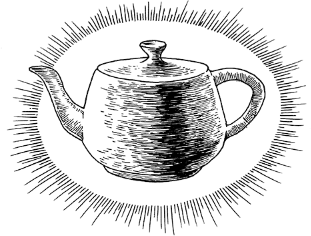At a Pittsburgh gallery in 2006, artist Keny Marshall exhibited 3D Pipes, an elaborate, freestanding installation of aged metal plumbing. “Everybody’s got 3D Pipes on their computer,” said Marshall in an interview. “The only difference is this 3D Pipes took months to build and weighs three to four thousand pounds.” Oddly inconspicuous, mistakable for exposed utilities in the gallery’s warehouse-like space, this life-size, patina’d tribute to the PC’s workhorse screen saver of the 1990s and early 2000s spoke of our culture’s recent yearnings for industrially or intimately material work, Dirty Jobs adventurism or an Etsy sort of DIY. Yet perhaps more pervasively than any other 2D commonplace of its time, the virtual 3D Pipes—and the screen saver as a genre—had woven its own frenetic, filigreed dreamwork about work.
On when we’re off, screen savers are both hallucinatory napscapes and work-site facades. Though customizable, like icons and wallpapers, and comparable to other cubicle brighteners (potted plants, fluorescent stickies), they possess a distinct poetics. As boxed, watchable decor, where a fireplace or window might once have sufficed, they tend to emulate the mesmeric morphing and gelatinous luminosity of fish tanks, lava lamps, self-tilting wave tanks. (Cognate forms might include digital picture frames, dance-club visuals, the trompe l’oeil of Yule-log DVDs.) Whether ribbons of light that streak and fold, frantic zooms through a brick maze, or an inexorable volley into the Milky Way, the screen saver’s most insistent optical illusion is infinitude. Reaching beyond dead opaque surface and deadpan document glare—as if receding behind, sinking into the depths of true aliveness those occlude—its generous spaciousness seems to redeem work’s merely serial endlessness. The screen saver is comfort food for thought the way pop chaos theory is: it lets us believe we are more linked by the serendipities of a butterfly’s wings than by finance capitalism. As tasks await amid cascading windows or avalanching paper, the screen saver’s immersive depths unfurl the cosmic picture that keeps the job in perspective, outsourcing gripes to karma, converting tedium into trance. It acknowledges, and briefly gratifies, one’s drowsy desire for not-work. After Dark’s winged toasters gently flapping through black sky thus merge the wistful memory of breakfast with the anticipation of slumberland. Popular distributed-computing screen saver Electric Sheep, drawing on users’ networked machines to produce fractals resembling chrysanthemum monsters or viscous mandalas, styles itself a version of the pastoral: its server overseers are called “shepherds.”
3D Pipes, by contrast, delivers up no metaphysical consolation of worlds starrier or grassier than the workplace. There are no picturesque appeasements of shimmying fish, no vacation vistas. Its darkness is less deep space than the subterranean,...
You have reached your article limit
Sign up for a digital subscription and continue reading all new issues, plus our entire archives, for just $1.50/month.
Already a subscriber? Sign in





